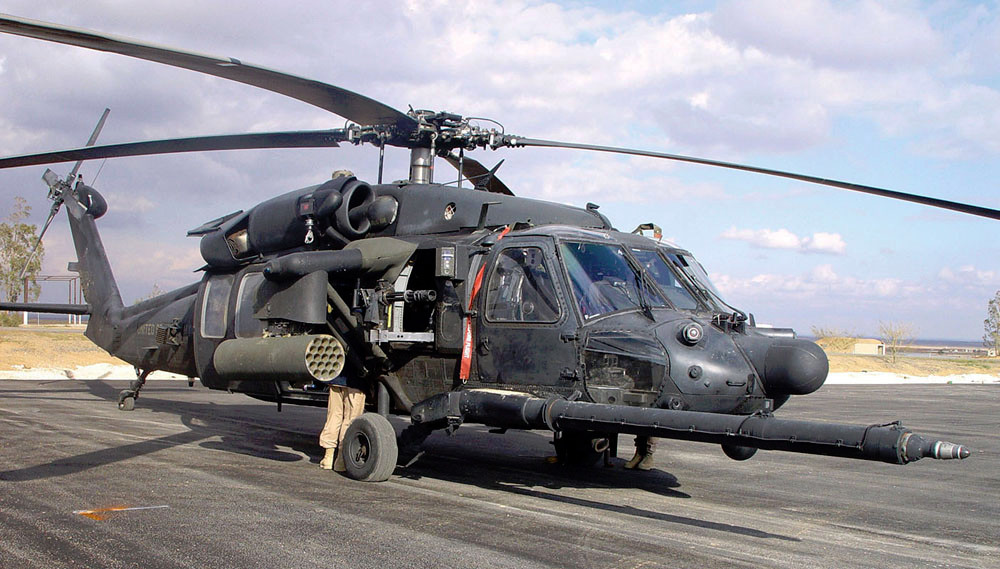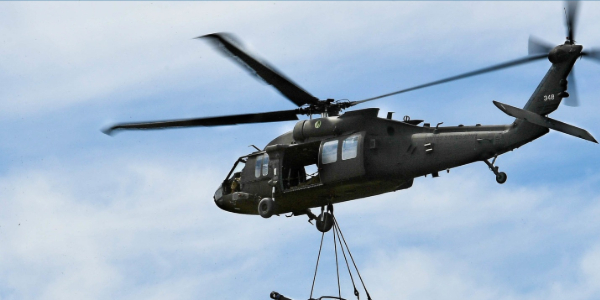Find out about the Aviation and Training Required for Operating a Blackhawk Helicopter
Find out about the Aviation and Training Required for Operating a Blackhawk Helicopter
Blog Article
Unveiling the Power and Convenience of the Blackhawk Helicopter
The Blackhawk helicopter stands as a testament to design excellence and armed forces innovation, significantly forming the landscape of contemporary airborne operations. Initially created in the late 1960s, this dual-engine aircraft has advanced right into a diverse system efficient in performing a series of goals, from tactical army releases to urgent clinical emptyings. Its style integrates sophisticated modern technology and products, improving both efficiency and survivability. As we discover its history and functional capacities, one must consider how the Blackhawk proceeds to affect modern fight techniques and altruistic initiatives alike. What does this mean for the future of army aviation?
History of the Blackhawk
The background of the Blackhawk helicopter is marked by substantial technological advancements and a critical development in armed forces air travel. Established in the late 1960s by Sikorsky Airplane, the UH-60 Blackhawk was originally conceived to change the older UH-1 Iroquois, generally called the "Huey." The Blackhawk's initial trip took place in 1974, and it was formally introduced to the united state Army in 1979.


This airplane was designed to satisfy the requiring needs of modern-day war, concentrating on durability, versatility, and rate (Blackhawk Helicopter). Its capability to operate in numerous atmospheres, combined with sophisticated avionics and design attributes, quickly developed the Blackhawk as an important property for armed forces operations worldwide
Throughout the 1980s and 1990s, the Blackhawk saw substantial usage in various conflicts, including the Gulf War and altruistic goals. The helicopter's adaptability enabled it to serve multiple functions, from troop transport to medevac and logistical assistance. As modern technology evolved, so did the Blackhawk, leading to various variations that catered to specific goal needs. Today, the Blackhawk remains a renowned sign of army aeronautics, continually refined to meet contemporary challenges.
Key Attributes and Requirements
Blackhawk helicopters are renowned for their engineering quality and operational convenience, flaunting a series of essential attributes and specs that improve their efficiency in various armed forces roles. Among the most considerable features is their dual-engine configuration, normally powered by the T700-GE-701C engines, which offer extraordinary integrity and efficiency. The helicopter has an optimum cruise speed of around 150 knots and a service ceiling of roughly 20,000 feet, allowing it to run properly in varied environments.
The Blackhawk's airframe is created from sophisticated composite materials and light weight aluminum alloys, making sure a robust framework while minimizing weight. It features a fully expressed rotor system that gives remarkable agility and stability. The helicopter can accommodate as much as 11 fight troops or lug as much as 8,000 pounds of outside freight, making it extremely versatile for numerous objectives.
Additionally, the Blackhawk is equipped with innovative avionics and communication systems, enhancing situational awareness and goal control. Its ability to operate in adverse climate conditions, incorporated with its low acoustic trademark, makes it a sneaky alternative for tactical procedures. In general, these attributes add to the Blackhawk's credibility as a cornerstone of contemporary military air travel.
Versatile Operational Duties
Distinguished for their design excellence and advanced capacities, Blackhawk helicopters serve a multitude of operational functions within army frameworks. Originally designed for troop transport, their adaptability has actually broadened, enabling them to do numerous objectives properly.
One of the main functions of the Blackhawk is as an utility helicopter, assisting in logistical assistance by moving materials and employees to and from remote locations. Furthermore, they succeed in medical emptying (MEDEVAC) operations, outfitted with advanced clinical equipment and personnel to provide crucial treatment in the area.
In combat situations, Blackhawks can YOURURL.com run as armed escort platforms, supporting ground forces by involving adversary possessions while guaranteeing troop security. Their capacity for special procedures makes them indispensable; they can conduct reconnaissance goals, workers healing, and straight activity raids, often in high-threat atmospheres.
In Addition, the Blackhawk's versatility enables it to support humanitarian goals and disaster feedback initiatives, providing aid and vital solutions in times of dilemma. This wide range of operational roles shows the Blackhawk helicopter's unequaled versatility, reaffirming its status as a crucial possession in contemporary army procedures worldwide.
Technological Advancements
Many technological advancements contribute to the Blackhawk helicopter's extraordinary efficiency and adaptability in diverse operational environments. One of one of the most substantial innovations is its composite rotor blades, which enhance lift and maneuverability while decreasing weight and upkeep requirements. The rotor system utilizes advanced materials that reinforce toughness and withstand environmental degradation, guaranteeing trusted procedure in extreme problems.
Additionally, the Blackhawk is furnished with a modern avionics suite that integrates sophisticated navigating and interaction systems - Blackhawk Helicopter. This consists of GPS, radar, and multi-function displays that assist in real-time situational awareness for pilots, adding to mission success under challenging conditions
Moreover, the helicopter's fly-by-wire control system enables precise handling and improved responsiveness, giving pilots with improved control during complex maneuvers. The incorporation of sophisticated engine technology, such as the T700-GE-701C engine, further improves performance, using raised power outcome and gas performance.
Lastly, modular layout principles allow fast reconfiguration for various missions, from army transport to medical evacuation, making the Blackhawk a functional possession in army and humanitarian procedures. These technical technologies collectively guarantee that the Blackhawk continues to be a formidable visibility in the skies.
Effect On Modern War

Outfitted with advanced avionics and communication systems, the Blackhawk allows seamless control amongst ground and air units, making certain prompt and exact feedback to dynamic fight situations. Its adaptability enables fast implementation in diverse settings, from metropolitan settings to sturdy surfaces, showing the complex nature of modern war.
Moreover, the Blackhawk's premium rate and agility facilitate fast insertion and removal of workers, reducing direct exposure to adversary fire. Its capacity to operate in aggressive conditions, More hints coupled with sophisticated protective actions, improves look at this now survivability and mission success prices.
As contemporary problems progressively count on joint operations and fast action, the Blackhawk helicopter remains at the forefront of armed forces strategy, personifying the evolution of air wheelchair and the vital function of air power in attaining strategic goals. Its influence on modern war remains to redefine the capabilities of militaries internationally.

Verdict
Finally, the Blackhawk helicopter exemplifies the junction of advanced design and functional adaptability, strengthening its standing as a foundation of modern-day army aviation. Its historic value, exceptional features, and versatility across different goal accounts highlight its essential function in contemporary war. As technological developments remain to improve its capacities, the Blackhawk continues to be a crucial possession for armed forces worldwide, showing exceptional performance in both fight and humanitarian operations.
The Blackhawk helicopter stands as a testament to design quality and military development, significantly shaping the landscape of modern-day airborne procedures.The background of the Blackhawk helicopter is marked by significant technical innovations and a calculated evolution in army aeronautics.Blackhawk helicopters are renowned for their design excellence and operational versatility, boasting a variety of key attributes and specs that boost their performance in numerous military functions.Countless technological advancements add to the Blackhawk helicopter's phenomenal efficiency and adaptability in varied functional environments.In final thought, the Blackhawk helicopter exemplifies the junction of advanced engineering and operational flexibility, strengthening its status as a keystone of modern army air travel.
Report this page